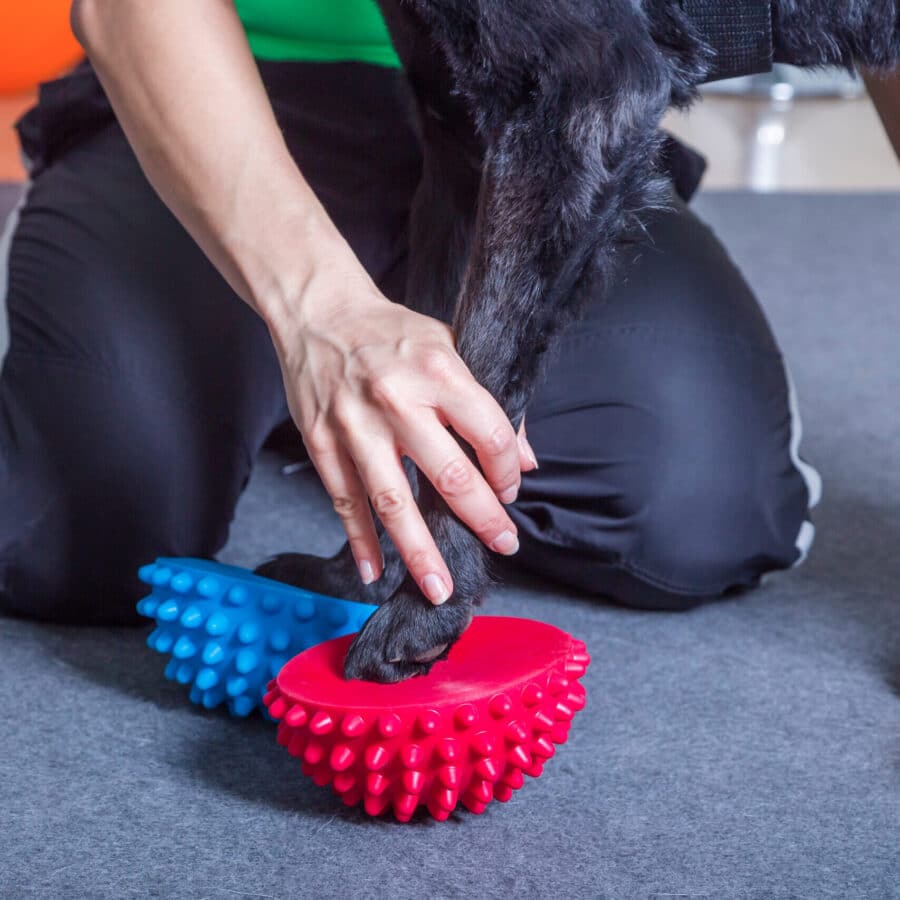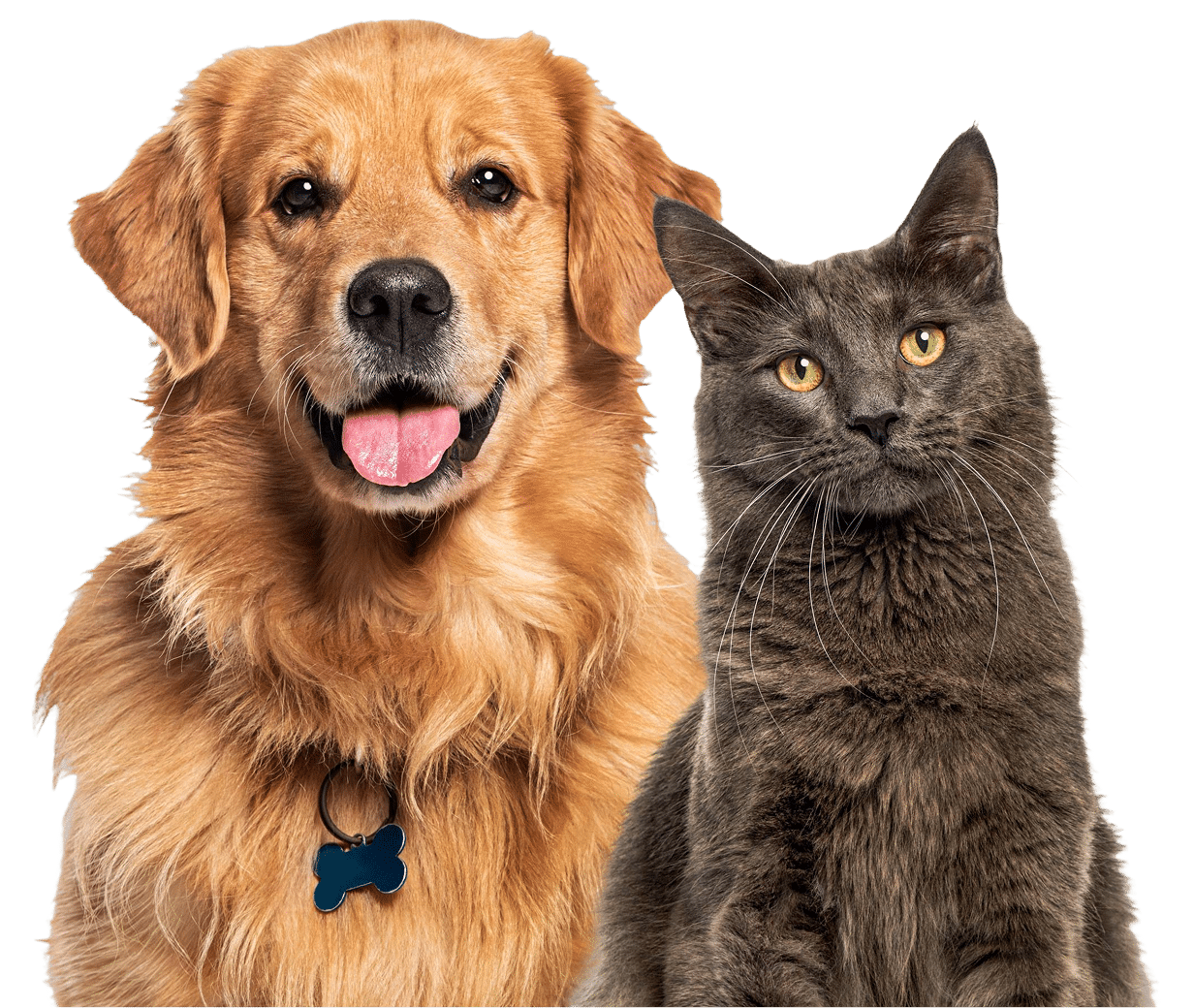
The Role of Rehabilitation in Your Pet’s Recovery Process
Rehabilitation is most commonly employed to help your pet’s recovery process after injury, surgery, or illness. It helps pets regain strength, mobility, and promotes their overall well-being. There are other times when rehabilitation can be an exceptionally good tool which we’ll cover below as well.
Here’s an overview of how rehabilitation contributes to your pet’s recovery in particular:
1. Pain Management
Any time a pet undergoes a procedure or sustains an injury, pain control is the number one focus after stabilization if they are seriously hurt. After appropriate treatment, rehabilitation techniques such as physical therapy, laser therapy, massage, and heat/cold therapy, among others, can help manage pain by improving circulation and promoting healing in tissues. These methods can also reduce inflammation, which is often a source of discomfort. This is also in combination with analgesia, medications to support systemic pain management.
2. Improved Mobility and Function
After surgery or injury, pets may struggle with movement due to weakness, muscle atrophy, or overall fatigue. Rehabilitation exercises can help improve joint range of motion, muscle strength, and overall mobility. This may involve activities like swimming, hydrotherapy, and stabilization exercises to rebuild muscle mass and restore normal function.
3. Prevention of Complications
Pets that are immobile or inactive for extended periods may develop complications such as muscle weakening, joint stiffness, or blood clots. Rehabilitation helps to prevent these complications by increasing blood flow, encouraging movement and maintaining flexibility during the recovery period.
4. Faster Recovery
Pets that participate in rehabilitation heal faster than those who don’t. Therapy can speed up the healing of tissues. In cases of surgery or fractures, rehabilitation can also help align bones properly and reduce the risk of re-injury.
5. Psychological Benefits
Rehabilitation can have psychological benefits for your pet as well. Physical recovery can improve mood by promoting the release of endorphins, reducing anxiety, and increasing overall comfort. For pets that are used to being active, rehabilitation can provided needed mental stimulation and engagement, preventing boredom and depression.
6. Customized Care
Rehabilitation programs designed and delivered by credentialed veterinary professionals are tailored to your pet’s specific condition. For example, a dog recovering from cruciate repair (knee) surgery will have a different rehabilitation plan than a cat recovering from a hip injury. Your pet’s therapy team will work with you to create a program that best suits your pet’s needs.
7. Long-Term Health
Even after recovery from an acute injury or illness, rehabilitation can help prevent long-term issues like chronic pain or arthritis. In the world of pain management, getting out in front of it is a critical step to lessen the severity. Continued therapy and exercises can help maintain flexibility and strength, leading to better mobility and overall health in the long term.
Common Rehabilitation Methods We Use at AEHV and AEHD:
- Acupuncture – insertion of fine needles at specific points relieves pain, improves circulation and promotes healing of various health conditions
- Aquatic therapy with an underwater treadmill
- At-home exercise plans and videos
- Cryotherapy – (ice) is used during the initial phase of an injury (72 hours) in order to minimize tissue damage, pain, and swelling
- Custom brace fitting and ordering (Achilles tendon tears, ACL tears, cranial cruciate ligament tears, carpal/ankle braces, etc.)
- Custom wheelchair and cart fitting and ordering
- Heat therapy – applying heat results in an increase of blood flow, which brings fresh nutrients and oxygen to the injury. The flowing blood also removes toxins in the damaged body part.
- Laser therapy – low-level lasers stimulate cell function and accelerate healing, effectively treating inflammation, pain, and wounds in pets
- Neuromuscular Electrical stimulation (E-stim/TENS) – to help prevent muscle atrophy, increase local blood circulation, and maintain or increase joint mobility
- Phovia Fluorescent Light Therapy – to accelerate tissue repair (mostly for dermatology conditions)
- Therapeutic massage – manipulation of muscles, tendons, fascia, and ligaments
Other Uses for Rehabilitation
Weight management: While it can be a sensitive topic for some, keeping your pet’s weight in check is one of the most important things you can do to help them live a long and healthy life. Just like humans, being overweight can lead to conditions such as diabetes and cancer, as well as contribute to arthritis and other painful ailments. Having a structured rehab program for your pet can help get them on the right track to better health and fitness.
Mental stimulation/reduction of stress and anxiety: You’ve probably heard ‘a tired dog is a good dog’, which is true, but regular activity can go a long way towards reducing stress and anxiety as well. Boredom can be a trigger for pets to get into mischief as well as simply be, well, boring.
Fun: For most pets, rehabilitation is actually fun. It’s dedicated time with their owner and veterinary professionals solely focused on them. Through touch, massage, and activities that feel like a game, many actually enjoy these sessions.
Rehabilitation for Dogs and Cats
Rehabilitation can be an essential aspect of recovery for pets, helping them regain function, reduce pain, and improve their quality of life. By working closely with a credentialed rehab veterinarian, you can ensure that your pet has the best chance for a full recovery and long-term health.



